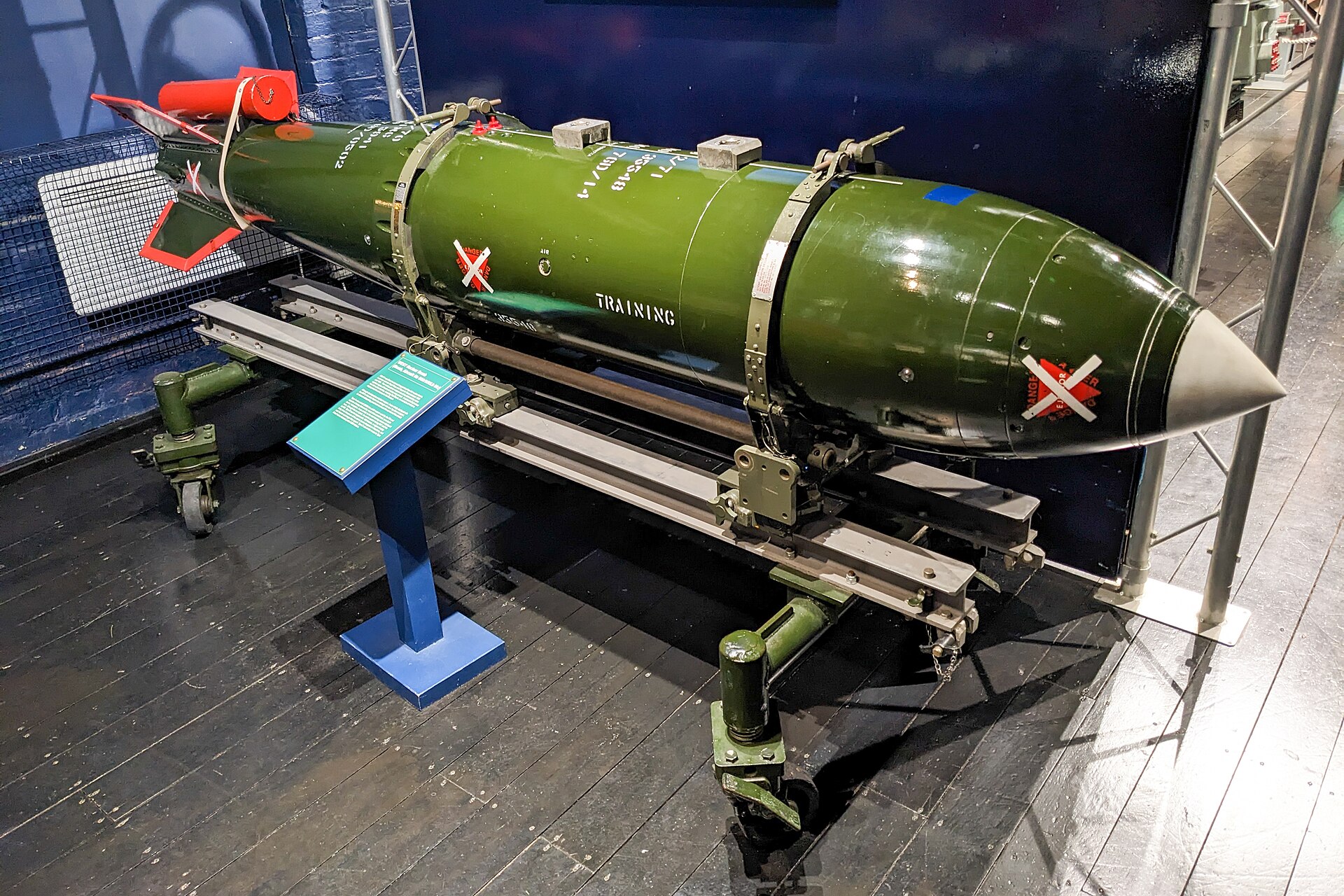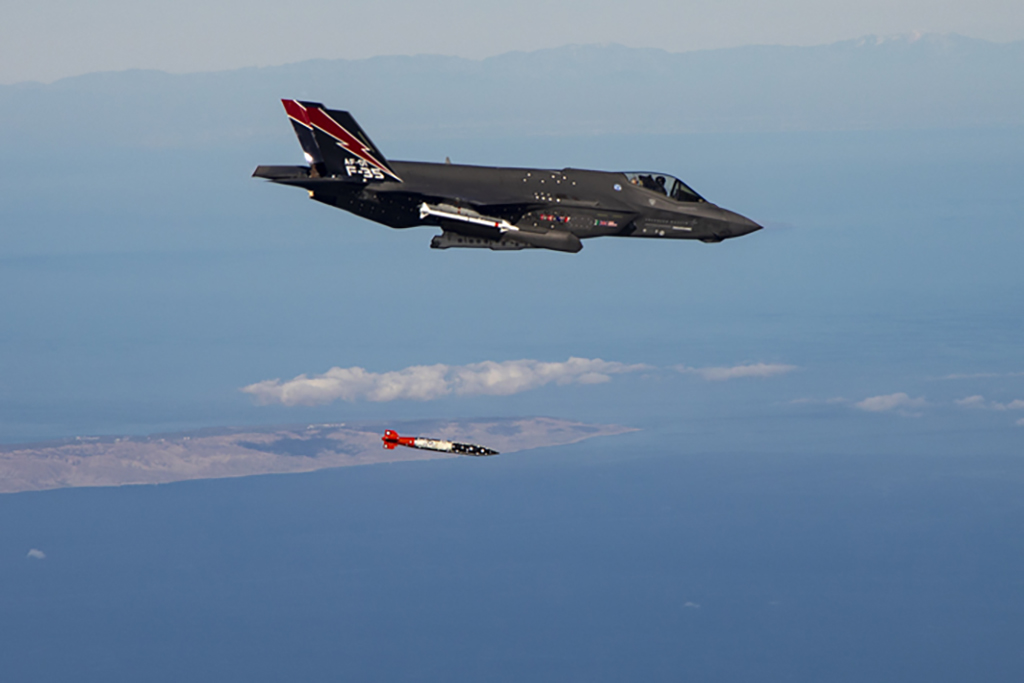The United Kingdom has finally confirmed the purchase of the conventional take-off and landing variant (COTL) of the F-35 Lightning II. The aircraft will be equipped with US air-launched nukes and deployed for NATO’s nuclear mission.
The United Kingdom will purchase 12 new F-35A fighter jets and join NATO’s nuclear mission in a major boost for national security, according to a press release issued by the British government. The dual-capable aircraft can carry both conventional and nuclear weapons.
It is pertinent to note that the UK had the distinction of being the first country to exclusively acquire the F-35B aircraft, a short take-off and vertical landing (STOVL) variant of the fighter jet specifically engineered for operations from short-field bases and aircraft carriers. The UK earlier placed an order for 48 F-35B, of which 37 have already been delivered.
According to a Strategic Defense Review released earlier this month by the British Ministry of Defense (MoD), the future Lightning Force will be a combination of F-35As and F-35Bs. However, the review stated that such a mix would be implemented “according to military requirements to provide greater value for money.” The F-35A, of course, cannot fly from aircraft carriers but fits the security and financial calculus.
The latest notification states that over the course of the program, the nation is anticipated to acquire 138 F-35s. However, the taxpayer will save up to 25% per aircraft if 12 F-35A are purchased instead of 12 F-35B as part of the upcoming procurement package.
“In an era of radical uncertainty, we can no longer take peace for granted, which is why my government is investing in our national security, ensuring our Armed Forces have the equipment they need and communities up and down the country reap the benefits from our defence dividend,” PM Keir Starmer said.
“Supporting 100 businesses across the country and more than 20,000 jobs, these F-35 dual-capable aircraft will herald a new era for our world-leading Royal Air Force and deter hostile threats that threaten the UK and our Allies.”
The RAF and the UK MoD emphasize the importance of future British participation in NATO’s nuclear burden-sharing arrangements.
The Sought-After Nuclear F-35A
The F-35A became a dual-capable aircraft in March 2024 when it operationally certified to carry the B61-12, a low-yield, thermonuclear gravity bomb.
Subsequently, the Netherlands became the first (European) operator of the F-35A Lightning II to publicly declare in May 2024 that its aircraft had taken on the nuclear mission.
The Dutch government announced that the Royal Netherlands Air Force (RNLAF) will fully transition from the F-16 Fighting Falcons to the advanced F-35 aircraft for NATO’s nuclear deterrence mission on June 1, 2024.
The government notified that the Volkel Air Base will serve as the home base for the Dual-Capable Aircraft F-35 squadron assigned to the nuclear role, mirroring the arrangement with the F-16s, as reported by the EurAsian Times at the time.
The F-35’s advanced capabilities, including stealth technology and advanced sensors, make it a formidable addition to NATO’s deterrence forces.

Notably, the B61-12, which the RAF F-35As are anticipated to carry, is part of NATO’s nuclear sharing program, which allows US-owned nuclear weapons to be hosted in non-nuclear NATO countries such as Belgium, Germany, Italy, the Netherlands, and Turkey.
The scheme enables these weapons to be forward deployed in safe vaults at air bases across host countries. They could be deployed in member nations’ combat jets in a crisis where their use is authorized by the United States and the NATO alliance.
In the future, F-35As from Belgium, Germany, and Italy will also join the DCA mission and receive B61-12s. Poland, another F-35A purchaser, has expressed a desire to become a member of NATO’s nuclear weapons-sharing program in the future.
The German Luftwaffe has even said on record that nuclear certification for the F-35A Lightning II Joint Strike Fighter (JSF) was a key factor in their decision to purchase the aircraft.
In January, the US appeared to confirm that the B61-12 had been deployed in Europe, without naming the host countries.
The new RAF F-35As will be stationed at RAF Marham in eastern England, which was previously used by Tornados equipped with WE.177 for the nuclear attack role. However, there have been indications that RAF Lakenheath could also be a potential site.
The UK currently does not have B61-12 bombs, but Pentagon documents obtained from the US Department of Defense’s procurement database last year revealed that RAF Lakenheath is being prepared to host the B61-12 gravity bombs.
The 12-foot B61-12 bomb carries a 50 kiloton warhead. It is known for its precision, owing to a controlled tail rudder that also allows for the removal of its parachute, enabling the pilot to airdrop the bomb miles away from the target.
Notably, the purchase gives the RAF a nuclear role again for the first time since the UK decommissioned its own air-launched nuclear weapons.
Return Of Air-Launched Nukes To The UK
Earlier, the UK also hosted the B61 family of nuclear weapons. However, they were formally withdrawn in 2008 due to a diminished perception of nuclear threat.
Britain also had its own air-launched nuclear bombs.
Ironically, it was a Labor government that decided to discontinue air-launched nuclear capability about 27 years ago, and it is a Labor government now that has decided to revive it.
Following the 1998 Strategic Defence Review (SDR) conducted by the Labour government under Tony Blair, the UK stopped using air-launched nuclear weapons in 1998. The decision was formalised with the removal of the WE.177 free-fall nuclear bombs, the final air-delivered nuclear weapons in the British arsenal.

The perceived necessity for a large and diverse nuclear arsenal decreased with the disintegration of the Soviet Union and the end of the Cold War in 1991.
Since the last air-launched nuclear weapon went out of service in 1998, Trident submarine-launched ballistic missiles (SLBM) have been the sole source of nuclear deterrence for the United Kingdom.
However, the Russian invasion of Ukraine, the return of conventional war to Europe, and Moscow’s repeated nuclear brinksmanship forced a strategic rethink in London.
Although the F-35A equipped with air-launched B61-12 won’t have the same sovereign capability as ballistic missile submarines because their use can only be authorised by Washington, the aircraft will certainly provide more flexibility and a distinct signalling style, particularly amid an enhanced threat perception.
Earlier, Defence Secretary John Healey said: “The Strategic Defence Review confirmed we face new nuclear risks, with other states increasing, modernising and diversifying their nuclear arsenals. And it recommended a new UK role in our collective defence and deterrence through a NATO-first approach.”
In addition to their role in nuclear deterrence missions, the aircraft will also be utilized for training purposes. The RAF statement says that the F-35As will serve as training aircraft for the Operational Conversion Unit (OCU) of 207 Squadron on a day-to-day basis.

“As the F-35A carries more fuel than the F-35B variant, it can stay airborne for longer, extending the available training time in each sortie for student pilots. As F-35As also require fewer maintenance hours, there will be increased aircraft availability on the OCU. These factors combined will improve pilot training and reduce the amount of time for pilots to reach the front-line squadrons,” it added.



